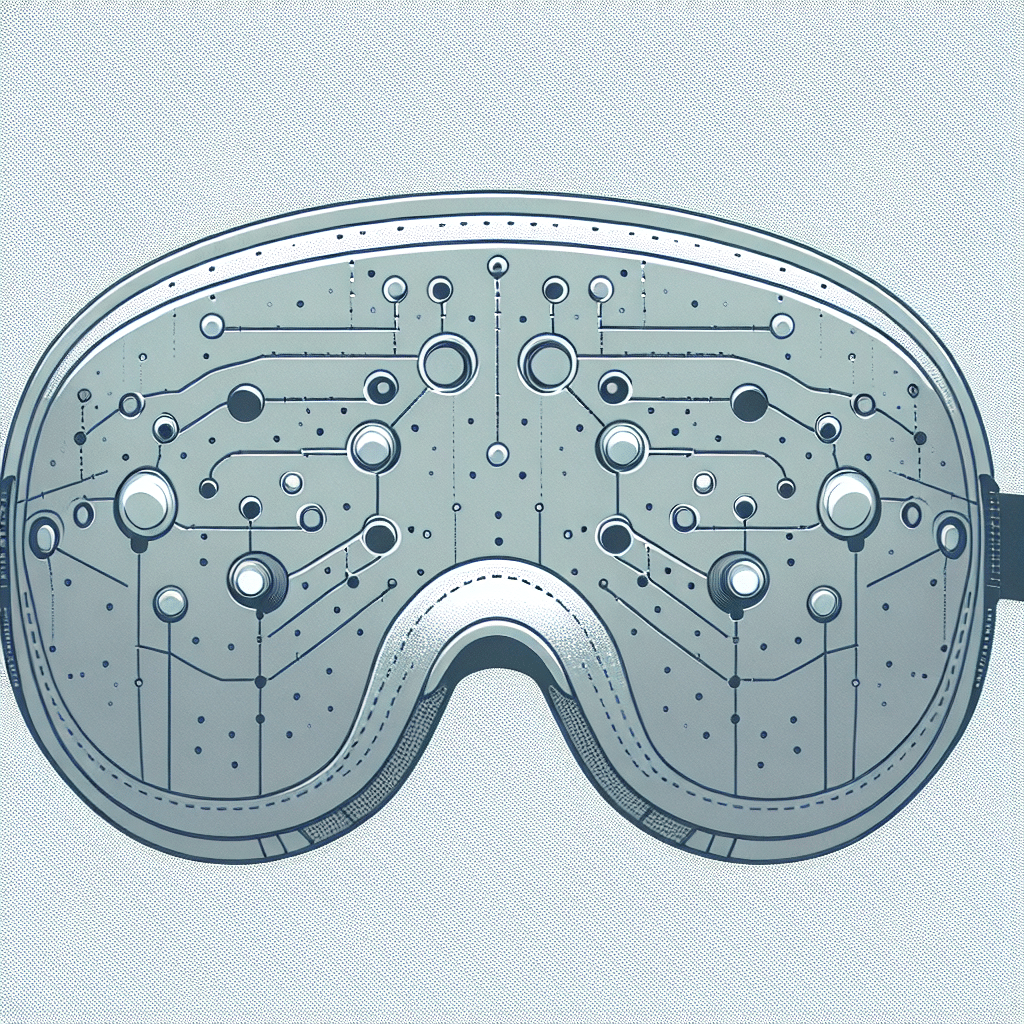Understanding Sleep Masks with Sensors: A Comprehensive Review
What Are Sleep Masks with Sensors?
Sleep masks with sensors are innovative sleep accessories designed to enhance sleep quality through technology. These devices not only block out light but also monitor various metrics related to sleep, such as heart rate, body temperature, and sleep stages. With built-in sensors, these masks provide users with feedback and insights about their sleep patterns, enabling them to make informed adjustments for better rest.
Key Features of Sleep Masks with Sensors
-
Light Blocking: A fundamental feature of any sleep mask is its ability to block light. High-quality masks employ soft, breathable materials that ensure comfort while completely obstructing external light sources.
-
Sensor Technology: The integration of advanced sensors is what sets these masks apart. Common sensors include:
- Heart Rate Monitors: Track the number of heartbeats per minute, providing insight into the user’s relaxation and stress levels.
- Sleep Stage Detection: Some masks use accelerometers and gyroscopes to detect movement, categorizing sleep into light, deep, and REM stages.
- Temperature Sensors: Measure the temperature around the user’s eyes and face, helping identify optimal sleeping conditions.
-
Connective Features: Many sleep masks with sensors connect to smartphones via Bluetooth. This connectivity allows users to access data through dedicated apps, enabling a personalized sleep profile.
-
Comfort and Fit: The design should include adjustable straps or contours that allow a snug but comfortable fit. Lightweight materials, such as memory foam and breathable fabrics, enhance user comfort throughout the night.
-
Sound Masking Technology: Some models incorporate white noise features or soothing sounds to help users drift off more easily. This can be particularly beneficial for those living in noisy environments.
Benefits of Using Sleep Masks with Sensors
-
Improved Sleep Quality: By tracking sleep metrics, users can make necessary changes to their environment or habits, leading to better quality sleep.
-
Informed Decisions: With detailed sleep reports generated by the associated app, users gain insights into their patterns, allowing for more informed lifestyle adjustments.
-
Stress Reduction: Knowing that they can track their heart rate and sleep stages can help users reduce anxiety around their sleep, fostering a more relaxed state conducive to deeper rest.
-
Environmental Control: Many masks monitor ambient temperature, providing alerts or suggestions to adjust bedroom conditions, which can significantly impact sleep quality.
Popular Models of Sleep Masks with Sensors
-
Naptime Sleep Mask: This popular model features a dual-layer design, with a sensor that provides sleep tracking and a sound masking feature. Its companion app shares insights about sleep quality and trends over time.
-
Sleepace Sleep Mask: Known for its ergonomic design, this mask incorporates heart rate and motion sensors, allowing for comprehensive tracking. The app provides a detailed analysis of sleep stages and even tips for improvement.
-
Oura Ring + Sleep Mask Combo: While primarily a ring, it pairs seamlessly with a high-quality sleep mask for enhanced tracking. The combination offers a broader view of sleep health, integrating body temperature and sleep cycle data.
-
Moona Sleep Mask: This unique model additionally features a temperature adjustment system, cooling or warming the mask based on user preferences, alongside standard sleep tracking metrics.
How to Choose the Right Sleep Mask with Sensors
-
Determine Your Needs: Are you looking to block out light, monitor sleep, or both? Knowing your primary goal will guide your decision-making process.
-
Comfort Matters: Always choose a mask made of high-quality, breathable materials that ensure comfort over extended periods.
-
Review Sensor Capabilities: Different masks offer varying sensor features. Decide which metrics are most important to you, whether it’s heart rate, movement, or temperature.
-
Connectivity: Check if the sleep mask pairs with mobile apps and the kind of data integration it offers. A user-friendly app experience is crucial for maximizing the device’s potential.
-
Battery Life and Charging: Consider how long the battery lasts on a single charge and whether it includes quick charging capabilities. A longer battery life enhances usability during trips or unforeseen circumstances.
Maintenance Tips for Sleep Masks with Sensors
-
Regular Cleaning: Follow the washing instructions typically outlined by the manufacturer. Most masks are spot-washable or have removable covers that can be machine washed.
-
Battery Care: If your sleep mask has a rechargeable battery, avoid overcharging and store the mask in a cool, dry place to prolong battery life.
-
Avoid Moisture: Keep the mask dry and try to avoid using it in high-humidity environments to prevent damage to the electronic components.
Common Issues with Sleep Masks and How to Resolve Them
-
Discomfort: If a mask feels too tight, look for models with adjustable straps or soft materials that conform better to the face.
-
Inaccurate Sensors: Ensure the mask is correctly positioned and that sensors are unobstructed. Regular updates to the application can also improve sensor accuracy.
-
App Connectivity Problems: Keep the app updated and ensure Bluetooth settings are enabled on your device. Sometimes, restarting both the mask and the device can resolve minor glitches.
-
Battery Issues: If the mask doesn’t charge or hold battery life, check the charging cable and port for debris and ensure you’re using the correct power adapter.
Final Thoughts on Sleep Masks with Sensors
The combination of advanced sensor technologies with sleep masks offers an appealing solution for those seeking to improve their rest. By measuring vital health metrics, these masks empower users with the knowledge to enhance their sleep hygiene and overall health. Moreover, the integration of smart technology with everyday sleep routines elevates the experience, promising a more restorative sleep environment tailored to individual needs. The future of sleep aids is certainly bright with innovations like these paving the way for better personal sleep management.
